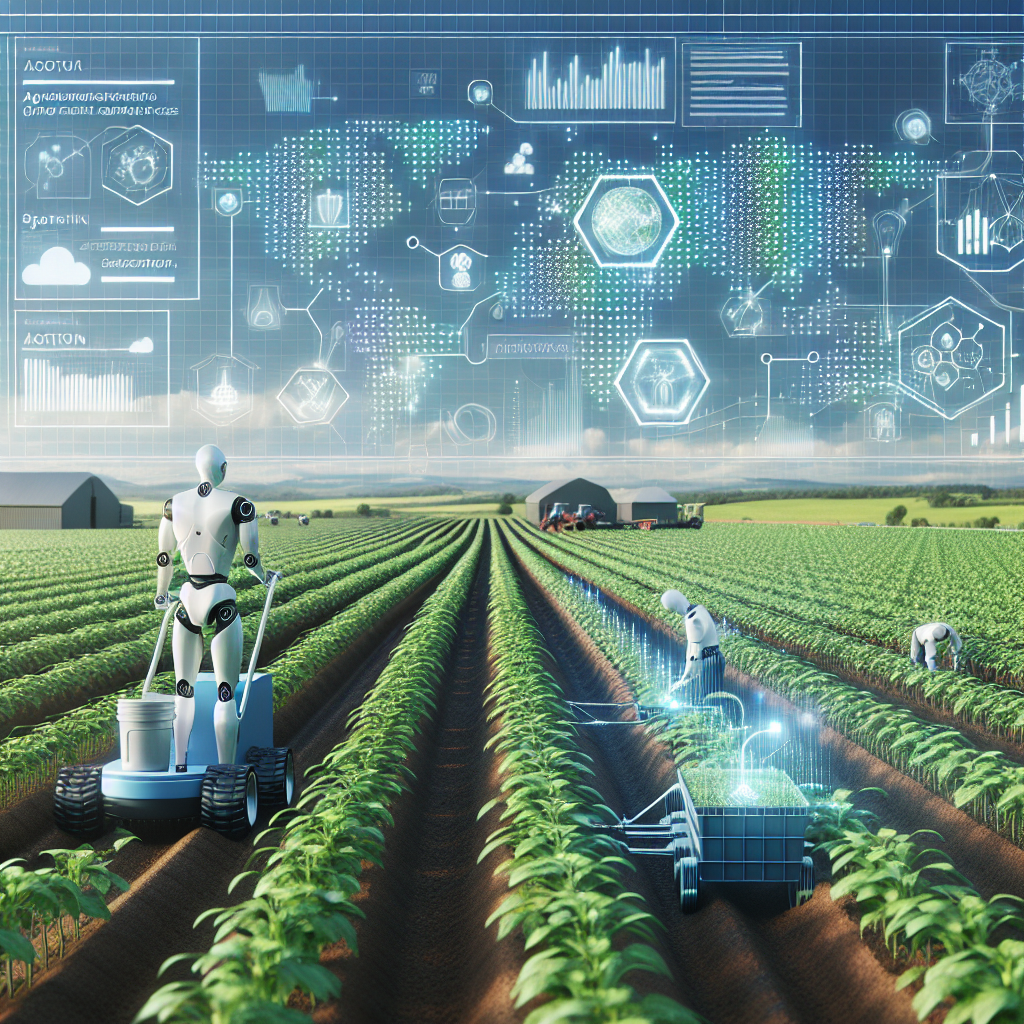Agricultural extension and advisory services play a crucial role in supporting farmers to improve their productivity, sustainability, and overall livelihoods. Traditionally, these services have been provided by government agencies, non-governmental organizations, and agricultural experts to disseminate knowledge and best practices to farmers. However, with the rapid advancement of technology, artificial intelligence (AI) is increasingly being integrated into agricultural extension and advisory services to enhance their effectiveness and reach.
AI in agricultural extension and advisory services refers to the use of AI technologies such as machine learning, natural language processing, and computer vision to create personalized, timely, and accurate information for farmers. These technologies allow for the analysis of large amounts of data, prediction of crop yields, identification of pests and diseases, and recommendation of optimal farming practices. By leveraging AI, agricultural extension and advisory services can provide farmers with real-time information and insights to make informed decisions that can improve their crop yields, reduce input costs, and mitigate risks.
One of the key benefits of AI in agricultural extension and advisory services is its ability to reach a larger number of farmers, particularly those in remote or underserved areas. Through mobile applications, SMS alerts, and voice-based platforms, AI-powered extension services can deliver personalized recommendations and guidance to farmers anytime, anywhere. This not only saves time and resources for farmers but also enables them to access the latest information and best practices to improve their farming practices.
Another advantage of AI in agricultural extension and advisory services is its ability to provide more accurate and relevant information to farmers. By analyzing data from multiple sources such as weather forecasts, soil samples, and satellite imagery, AI can offer tailored recommendations to farmers based on their specific needs and conditions. This personalized approach can help farmers to optimize their inputs, minimize risks, and increase their crop yields.
Furthermore, AI can also enable agricultural extension and advisory services to monitor and evaluate the impact of their interventions more effectively. By tracking key performance indicators such as crop yields, input costs, and adoption rates, AI can help extension workers to identify areas for improvement and optimize their strategies. This data-driven approach can lead to more targeted and efficient extension services that deliver tangible benefits to farmers.
Despite the numerous benefits of AI in agricultural extension and advisory services, there are also challenges and limitations that need to be addressed. One of the main challenges is the digital divide, as many farmers in developing countries may not have access to smartphones or internet connectivity. To overcome this barrier, extension services need to ensure that AI technologies are accessible through low-cost mobile phones or community-based centers.
Another challenge is the lack of technical skills and capacity among extension workers to effectively use AI technologies. Training and capacity-building programs are essential to equip extension workers with the necessary skills to leverage AI for improved service delivery. Additionally, ensuring data privacy and security is crucial to build trust among farmers and protect their sensitive information.
In summary, AI has the potential to revolutionize agricultural extension and advisory services by providing farmers with personalized, timely, and accurate information to improve their farming practices. By leveraging AI technologies, extension services can reach a larger number of farmers, deliver targeted recommendations, and monitor the impact of their interventions more effectively. However, addressing challenges such as the digital divide, capacity-building, and data privacy is essential to maximize the benefits of AI in agricultural extension and advisory services.
FAQs:
1. What are some AI technologies used in agricultural extension and advisory services?
– Some AI technologies used in agricultural extension and advisory services include machine learning, natural language processing, and computer vision. These technologies enable the analysis of data, prediction of crop yields, identification of pests and diseases, and recommendation of optimal farming practices.
2. How can AI help farmers in remote or underserved areas?
– AI-powered extension services can deliver personalized recommendations and guidance to farmers through mobile applications, SMS alerts, and voice-based platforms. This allows farmers in remote or underserved areas to access the latest information and best practices to improve their farming practices.
3. What are the benefits of AI in agricultural extension and advisory services?
– The benefits of AI in agricultural extension and advisory services include reaching a larger number of farmers, providing more accurate and relevant information, and monitoring and evaluating the impact of interventions more effectively. AI can help farmers optimize their inputs, minimize risks, and increase their crop yields.
4. What are some challenges of using AI in agricultural extension and advisory services?
– Some challenges of using AI in agricultural extension and advisory services include the digital divide, lack of technical skills among extension workers, and data privacy and security concerns. Addressing these challenges is essential to maximize the benefits of AI in agricultural extension and advisory services.

